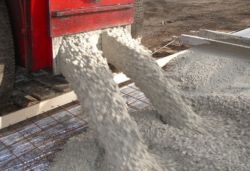Perhaps you wondered whether they knew about concrete in antiquity, and who among the ancient civilizations was the first to use concrete. Opinions on this issue diverge.
Indeed, more blocks of the great Egyptian pyramids were joined by a grouting mortar similar in properties to concrete. There is an opinion that the blocks of the Egyptian pyramids were cast in place into molds made of a material similar in properties to concrete. Similar mortars were also used in the construction of brick buildings in Ancient Mesopotamia. A masonry of the Great Wall of China is cemented with a solution based on rice and pounded lime. But ...
All these solutions are not waterproof! And concrete is necessarily a waterproof material by definition.
By this real discoverer of this concrete on the basis of cement, the Roman Empire can be rightfully considered. The Romans did not know the art of making artificial concrete, but thanks to the natural outputs of the pozzolana (volcanic ash deposits) and the route they found in the Eifel area (hardened volcanic ash deposits). Mixing these materials with lime, they received almost modern cement, and adding sand, gravel and stone, they created real concrete!
True, and there could not have been without intrigue ... Most likely, the Romans received a recipe for concrete from the Etruscans (a tribe living in northern Italy), who were conquered and assimilated. Already the Etruscans used concrete on the basis of "Roman concrete" in the masonry of buildings.
However, the Romans not only significantly improved the quality of their concrete (by adding Vesuvius slag), but also mastered almost all modern uses of concrete!
First of all, they began to make floodplain foundations and walls of large buildings. As a rule, brickwork was laid out an immovable formwork of the wall, into which, as far as the erection and pouring of concrete.
Later, the Romans learned how to make flood structures with removable formwork using concrete. The dome of the ancient Roman Pantheon, is still the largest object made of concrete without the use of reinforcement! Without conditionality, there were also larger objects destroyed in the years of the fall of Rome.
They also owned the technology of making slabs and blocks of concrete. In particular, the method of underground carburizing was known. Lime burned, extinguished, mixed with sand or other additives, then poured the resulting mass of a layer of large gravel and covered with earth. Without penetration of air, the construction froze for a year or two, and became solid, like granite.
Of concrete built houses, baths, aqueducts, fortresses, piers, bridges. Thanks to the high performance characteristics of Roman concrete and the virtuosic execution of well-proven engineering solutions, such masterpieces of world architecture as the Colosseum amphitheater and the temple dedicated to the gods of Olympus Pantheon have survived to this day.
However, the Romans did not comprehend the technology of artificial cement, and therefore of full-value concrete. Hydrostatic properties of concrete materials occur when materials are fired at temperatures above 1400 degrees. The Romans used natural materials of volcanic origin. And only in 1824 Joseph Aspdin received a patent for Portland cement, the first full-fledged artificial concrete.
Каталог
Concrete - the history of ancient times
Технические характеристики





